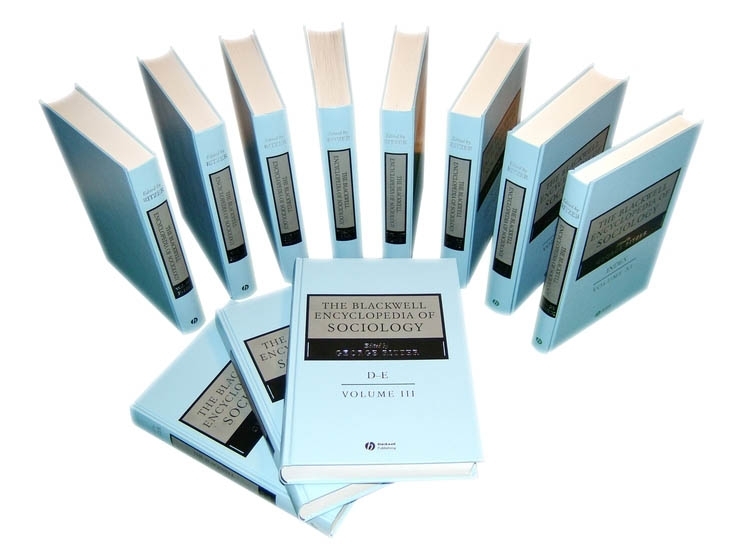Communication
Elihu Katz,
Yonatan Fialkoff,
Elihu Katz
University of Pennsylvania, USA
Hebrew University of Jerusalem, Israel
Search for more papers by this authorElihu Katz,
Yonatan Fialkoff,
Elihu Katz
University of Pennsylvania, USA
Hebrew University of Jerusalem, Israel
Search for more papers by this authorFirst published: 19 November 2019
Abstract
Communication is a process whereby social actors transfer or share symbolic content via media. The evolution of media has successively shaped societies as oral, scribal, print, electronic, and digital. Academic research on the effects of communication focuses on transmission, integration, persuasion, gratification, and cultivation.
References
- Anderson, B. (1983) Imagined Communities: Reflections on the Origin and Spread of Nationalism, Verso, London.
- Carey, J.W. (1989) Communication as Culture: Essays on Media and Society, Unwin Hyman, Boston, MA.
- Dewey, J. (1916) Democracy and Education: An Introduction to the Philosophy of Education, Macmillan, New York.
- Eisenstein, E.L. (1979) The Printing Press as an Agent of Change: Communications and Cultural Transformations in Early-Modern Europe, Cambridge University Press, Cambridge.
- Gallagher, W. (2016) How the Post Office Created America: A History, Penguin, New York.
- Gerbner, G. and Gross, L. (1976) Living with television: the violence profile. Journal of Communication, 20 (2), 172–199.
10.1111/j.1460-2466.1976.tb01397.x Google Scholar
- Gitlin, T. (1979) Prime time ideology: the hegemonic process in television entertainment. Social Problems, 26 (3), 251–266.
- Hall, S. (1973) Encoding and Decoding in the Television Discourse, University of Birmingham Centre for Cultural Studies, Birmingham.
- Hoggart, R. (1957) The Uses of Literacy, Chatto & Windus, London.
- Innis, H.A. (1950) Empire and Communications, Oxford University Press, Oxford.
- Jefferson, T. (1946) Thomas Jefferson on Democracy, ed. S.K. Padover, New Mentor Library, New York.
- Lasswell, H. (1948) The structure and function of communication in society, in The Communication of Ideas (ed. L. Bryson), Harper, New York, pp. 117–129.
- McCombs, M.E. (2004) Setting the Agenda: The Mass Media and Public Opinion, Polity, Malden, MA.
- McLuhan, M. (1964) Understanding Media: The Extensions of Man, McGraw-Hill, New York.
- Noelle-Neumann, E. (1974) The spiral of silence: a theory of public opinion. Journal of Communication, 24 (2), 43–51.
- Ong, W. (1982) Orality and Literacy: The Technologizing of the Word, Methuen, London.
10.4324/9780203328064 Google Scholar
- Riesman, D. (1950) The Lonely Crowd: A Study of the Changing American Character, Yale University Press, New Haven, CT.
- Rousseau, J.J. (1979) Émile: or On Education, Basic Books, New York.
- Schudson, M. (1984) Advertising, the Uneasy Persuasion: Its Dubious Impact on American Society, Basic Books, New York.
- Tarde, G. (1898) L'opinion et la foule, Presses Universitaires de France, Paris.
- Tunstall, J. (1977) The Media are American: Anglo-American Media in the World, Columbia University Press, New York.
Further Readings
- Briggs, A. and Burke, P. (2009) A Social History of the Media: From Gutenberg to the Internet, Polity, Cambridge.
- Castells, M. (2010) The Rise of the Network Society, 2nd edn, Wiley Blackwell, Chichester.
10.1002/9781444319514 Google Scholar
- Dayan, D. and Katz, E. (1994) Media Events: The Live Broadcasting of History, Harvard University Press, Cambridge, MA.
- Gans, H.J. (1979) Deciding What's News: A Study of CBS Evening News, NBC Nightly News, Newsweek, and Time, Northwestern University Press, Evanston, IL.
- Hallin, D.C. and Mancini, P. (2004) Comparing Media Systems: Three Models of Media and Politics, Cambridge University Press, Cambridge.
10.1017/CBO9780511790867 Google Scholar
- Kenski, K. and Jamieson, K.H. (eds) (2017) The Oxford Handbook of Political Communication, Oxford University Press, Oxford.
- Lang, K. and Lang, G.E. (1953) The unique perspective of television and its effect: a pilot study. American Sociological Review, 18 (1), 3–12.
- Lipset, S.M., Trow, M.A., and Coleman, J.S. (1956) Union Democracy: The Internal Politics of the International Typographical Union, Free Press, New York.
- Meyrowitz, J. (2010) Media evolution and cultural change, in Handbook of Cultural Sociology (ed. J.R. Hall, L. Grindstaff, and M. Lo), Routledge, New York, pp. 52–63.
- Mutz, D.C. (2006) Hearing the Other Side: Deliberative versus Participatory Democracy, Cambridge University Press, Cambridge.
10.1017/CBO9780511617201 Google Scholar
- Park, D.W. and Pooley, J. (eds) (2008) The History of Media and Communication Research: Contested Memories, Peter Lang, New York.
- Peters, J.D. (2012) Speaking into the Air: A History of the Idea of Communication, University of Chicago Press, Chicago, IL.
- Schramm, W. and Roberts, D.F. (1977) Process and Effects of Mass Communication, rev. edn, University of Illinois Press, Urbana, IL.
- Schudson, M. (1982) The Power of News, Harvard University Press, Cambridge, MA.



